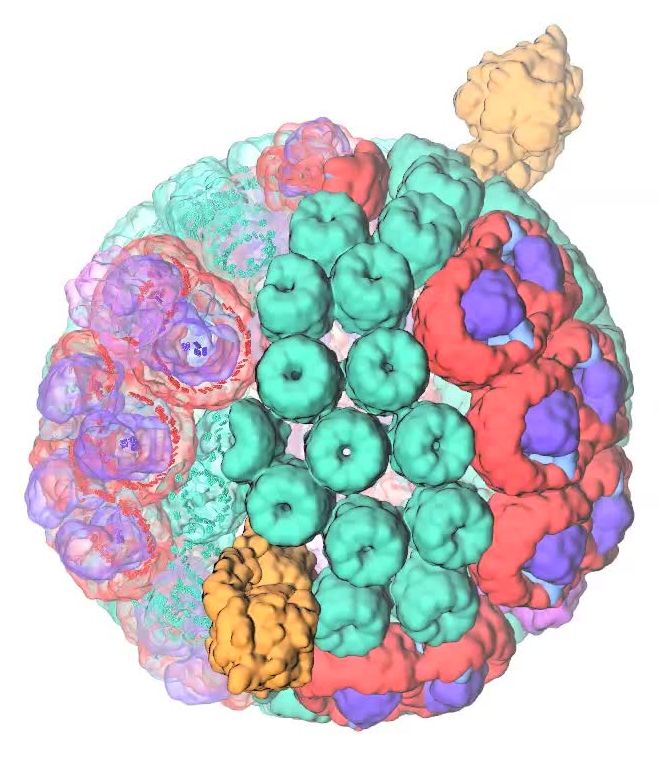Additional insights on methods in improving efficiencies during the conversion of light energy into chemical energy.
The chromatophore of purple bacteria is an intracellular spherical vesicle that exists in numerous copies in the cell and that efficiently converts sunlight into ATP synthesis, operating typically under low light conditions. Building on an atomic-level structural model of a low-light-adapted chromatophore vesicle from Rhodobacter sphaeroides, we investigate the cooperation between more than a hundred protein complexes in the vesicle. The steady-state ATP production rate as a function of incident light intensity is determined after identifying quinol turnover at the cytochrome bc1 complex (cytbc1) as rate limiting and assuming that the quinone/quinol pool of about 900 molecules acts in a quasi-stationary state.










Comments are closed.